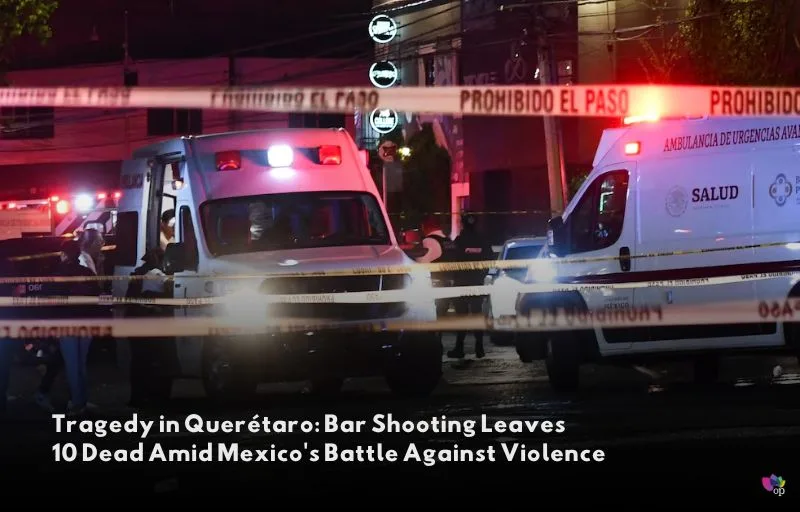A devastating act of violence in Querétaro has left ten people dead and seven others injured, shaking a city long considered a refuge from Mexico’s pervasive cartel-related bloodshed. The attack occurred at the Los Cantaritos bar, located in the city’s downtown district when four heavily armed assailants arrived in a pickup truck and unleashed gunfire on patrons.
Authorities reported that one suspect was apprehended shortly after the incident, and the vehicle used in the attack was found torched nearby. Among the deceased were three women, as confirmed by the Querétaro state prosecutor’s office. Forensic teams are meticulously examining the crime scene, seeking crucial evidence that may unravel the motive and lead to the perpetrators’ capture.
Querétaro’s Image as a Safe Haven Shattered
Located approximately 200 kilometers northwest of Mexico City, Querétaro has often been regarded as one of the safest cities in a country plagued by violence. Known for its Spanish colonial architecture and thriving economy, it has largely avoided the drug cartel warfare seen in regions like Sinaloa or Guerrero. However, Sunday’s attack has brought an unsettling reality to the forefront: violence can erupt anywhere.
The broader context of Mexico’s insecurity cannot be ignored. Over the past two decades, the nation has been mired in a cycle of violence, much of it stemming from organized crime and drug trafficking. Official data suggests more than 450,000 homicides since 2006, a staggering toll linked to the ongoing drug war.
National Leadership Faces Heightened Security Challenges
President Claudia Sheinbaum, who assumed office on October 1 as Mexico’s first female president, faces mounting pressure to address these issues. Unlike past administrations that adopted militarized approaches, Sheinbaum has advocated for a strategy centered on social reform and intelligence. Her administration emphasizes addressing the root causes of violence, including poverty and lack of opportunity, while deploying enhanced intelligence to disrupt criminal networks.
However, this softer approach is being tested, particularly as violent incidents make headlines. Just last week, 11 bodies—including those of two minors—were discovered in a pickup truck in Chilpancingo, Guerrero. These individuals were part of 17 traveling merchants who had been reported missing. In Sinaloa, infighting among cartel factions has surged following the arrest of prominent drug lord Ismael Zambada, further destabilizing the region.
Analyzing the Querétaro Incident: A Broader Context
The Querétaro shooting raises critical questions about the expanding reach of organized crime into areas once deemed safe. While no cartel involvement has been confirmed in this attack, the use of long weapons and the coordination involved point to the possibility of gang or organized crime connections.
The incident also underscores a troubling trend: public spaces like bars, restaurants, and even schools are becoming targets in a climate where impunity often reigns. Despite successes in apprehending suspects, local law enforcement faces challenges in adequately addressing such large-scale attacks without broader systemic reforms.
What Needs to Change?
For Mexico to turn the tide against violence, a multi-faceted strategy is essential. Strengthening local police forces, improving judicial efficiency, and expanding socio-economic opportunities in underserved regions are critical steps. Sheinbaum’s focus on social policy holds promise but will require patience and steadfast commitment in the face of immediate security crises.
Moreover, international cooperation could bolster efforts to cut off the flow of arms and financial resources that empower cartels. For regions like Querétaro, investments in community resilience and local intelligence networks could help preempt attacks and restore public confidence.
Conclusion
The Querétaro bar shooting is a grim reminder of the challenges facing Mexico as it grapples with entrenched violence. While the city mourns the loss of its residents, the nation must reflect on how to build a safer, more secure future. President Sheinbaum’s leadership and policies will play a pivotal role, but the path to peace will demand contributions from all levels of society.
As Mexico moves forward, incidents like these should not only spark grief but also inspire renewed determination to address the root causes of violence and prevent further tragedies.
References


